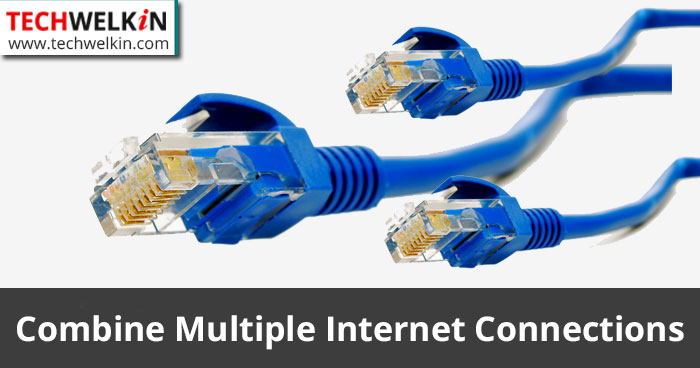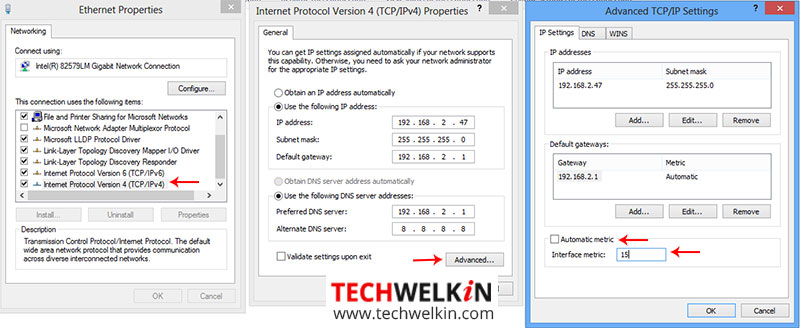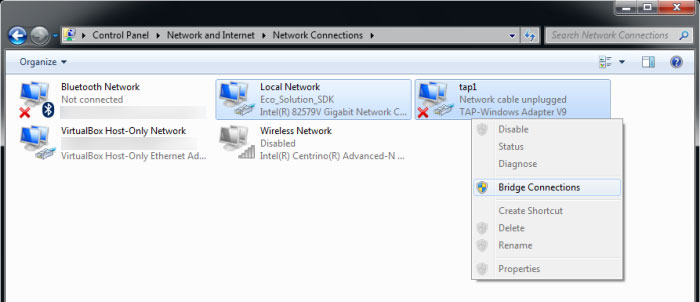Having multiple active Internet connections and using just one of them to download a big file is not a very efficient way. Suppose, you have two connections of 1 MBPS speed and you’re downloading a high quality 2GB movie file. You can combine both your connections to get a speed of around 2 MBPS and thus you will be able to watch your movie sooner! In this article we will learn how you can combine Internet connections. You can join them regardless of their type — wired LAN/WAN, wifi connection or mobile Internet (3G/4G etc). Your connections may be from different ISPs but you can still join them.
Before We Begin
Let’s first understand some background stuff. Combining Internet connections is achieved by load balancing wherein a computer uses multiple IP addresses to download data. Load balancing can be done using both software or hardware. However, combined connection can be used only by those software that support such a connection. For example, the following actions can make use of the combine Internet connection:
Torrent clients (to download movies, software etc.) Web browsers (your surfing speed will increase) YouTube (no more buffering!) Download Managers (speedier downloads)
Total data usage will be according to the individual connection usage. So, total usage will be the sum of the usage from individual connections.
Method 1: Set Windows Automatic Metric to Combine Connections
Note: with this method you can combine the following types of connections: Bluetooth Modem, Mobile Broadband, OTA Modem, Dial-Up Windows operating system has a metric value that is assign to an IP route to indicate the cost associated with using that route. When you have multiple active Internet connections on your computer, Windows automatically computes the cost of using them and assign a metric value to each of them. Then Windows set the most cost effective connection as default and keeps other active connections for backup (fail safe) purpose. You can manually assign this metric value. If you set this value the same for all active connections you can force Windows to use all the connections.
Open Control Panel Go to Network and Sharing Center > Change Adapter Settings Double click on your active Internet connection Select Internet Protocol TCP/IP Version 4 Click on Properties button. A new box will open. Click on Advance button Another box will come up. Uncheck Automatic Metric Type value 15 in the box labelled Interface metric. Repeat the above steps for all the active connections your have Disconnect all your connections Restart your computer and reconnect all the Internet connections
That’s it! You will have the combined the power of all your Internet connections!
Method 2: Use Bridge Connections Feature of Windows
Note: This method should be used for combining LAN/WAN connection Windows also provides a feature of bridging connections. To use this feature, you have to have at least two active LAN/WAN connections on your computer.
Open Control Panel Go to Network and Sharing Center Here you will see all the available active Internet connection Select all the active connection (use CTRL+Click to select multiple connections) Right click on one of the selected connections and choose Bridge Connections A network bridge will be created and thus your selected Internet connections will be combined.
Note: You may have to provide administrative credentials in order to do this bridging.
Method 3: Combine Internet Connections With Load Balancing Router
Several load balancing routers are available in the market. When you search for it in Google, TL-R480T+ comes as the first choice. There are routers from better known companies like Cisco as well. But load balancing router from TP-Link is cheapest and could be affordable by individuals and small businesses.
This router providers 4 WAN ports where you can plug in up to four wired connections. This piece of hardware comes with built-in advanced algorithm that guarantees maximum Internet speed after you combine several connections. TL-R480T+ router is available for about $65 at present. Join all your connections and then output them as one single connection. Then you can distribute the combined speed through a wifi router, LAN hub or you can directly connect it to your computer. After running the setup of the router, go to the configuration page as instructed in the user manual.
Go to Advanced > Load Balancing option Uncheck Enable Application Optimized Routing option Uncheck Enable Bandwidth Based Balance Routing option You should also set the Maximum Transmission Unit (MTU) of router to avoid timeout errors. Make sure that the IP address assigned to load balancing router is different from the default gateway address of the WAN connections. The default IP of router is 192.186.0.1 (as usual)… change your default gateway IP if it is the same.
Method 4: Use Third Party Software to Combine Internet Connections
Download Connetify and install it on your computer (requires Windows 8 or above). This third party software offers you two programs:
Connectify Hotspot: this program converts your wifi-enabled computer into an Internet hotspot — so that other people can also use the Internet connection from your computer. Connectify Dispatch: this program combines Internet connections available on your computer.
At present, we are interested in Connectify Dispatch. So, after installation, run this program and connect all you Internet connections. That’s all… your Internet connections will join forces to give you superfast speed! We hope that this article on joining the available Internet connections was useful for you. Should you have any questions or suggestions, please use the comments area. Thank you for using TechWelkin!



